Unglazed Porcelain Tile (Styles & Pros and Cons)
Here’s the details about unglazed porcelain tile, including what it is, different types like floor, mosaic, penny, & subway tile, pros and cons, and differences from glazed tiles.

There are many different options for porcelain tiles (based on the style and manufacturing process) you can choose for your home. You can go for either glazed or unglazed tiling, depending on your preference.
While most of the porcelain tiles you can see in the market are glazed, you have the option of going for unglazed porcelains. But before doing so, make sure you know what types of tiles you’re choosing and what to expect.
What Is Unglazed Porcelain Tile?
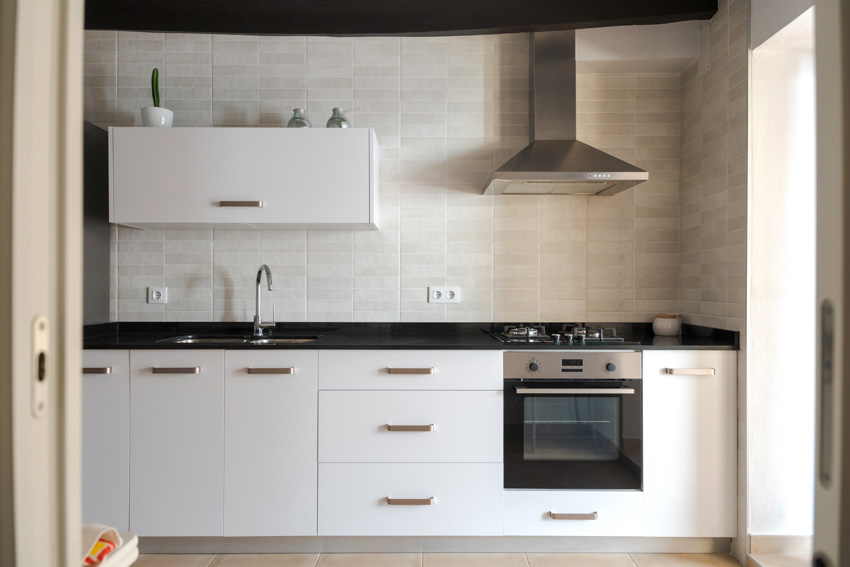
Unglazed porcelain tiles have this earthier and more natural aesthetic because the patterns formed on them are naturally created from the minerals found in the clay. Pigments can also be added, but most of these unglazed tiles are more natural than glazed porcelain tiles.
Technically, glazed porcelain tiles have this glossy and shiny look, but they are named not for their appearance but for the liquid glass or enamel coated in the surface of the tiles for an added protective layer. Since unglazed porcelain tiles forgo this part of the manufacturing process, they settle without the coating or the “glaze,” making them unglazed.
Unglazed tiles come with a matte appearance but they may also come with polished surfaces. And even without this liquid glass coating, these unglazed porcelain tiles may have this shiny and reflective look. They can have a high sheen and mirror-like surface despite not having the glaze used in the other types of porcelain tiles.
Unglazed porcelain tiles, without the standard liquid glass protecting coating, tend to absorb liquid more and stain more if they go without high-quality protective sealant. You will need to reseal these tiles every now and then.
These tiles are often chosen for the following places and applications:
• Commercial Spaces: Unglazed porcelain tiles are durable enough to be exposed to heavy footfall, which you can expect in commercial spaces, including airports and hotel lobbies.
• Slippery Areas: Popular for their textured finished, unglazed porcelains, they are naturally slip-resistant, making them an ideal choice for areas that tend to become slippery when wet, including bathrooms, laundry rooms, outdoor patios, and pool surrounds. The tiles need to be excellently sealed to protect the material from possible moisture damage and staining.
• Outdoor Areas: Unglazed tiles are denser and thicker, which will make them ideal for outdoor spaces (e.g. garden patio) exposed to weather elements that will require a specific level of durability.
Types of Unglazed Variety of Porcelain Tiles
Here’s a quick breakdown of the popular types of unglazed porcelain tiles.
| Tile Type | Quick Summary |
|---|---|
| Unglazed Porcelain Floor Tile | A durable and thicker tile option that’s slip-resistant and can be used indoors and outdoors. |
| Unglazed Porcelain Mosaic Tile | A decorative option with intricate patterns and designs, often used for backsplashes and walls.. |
| Unglazed Porcelain Penny Tile | Small, penny-sized tiles that can be used for flooring, backsplashes, or to create decorative designs. |
| Unglazed Subway Tile | A classic, rectangular-shaped tile that is commonly used for kitchen and bathroom walls and backsplashes. |
Unglazed Type Porcelain Floor Tile

Non-glazed tile flooring is a better option than its glazed counterpart since the material is notably denser, thicker, and more durable.
These can take wear and tear and heavy footfalls better than their glazed countertops. These durable pieces would last longer and can even be installed in areas with heavy foot traffic.
Unglazed Mosaic Tile Made of Porcelain Material
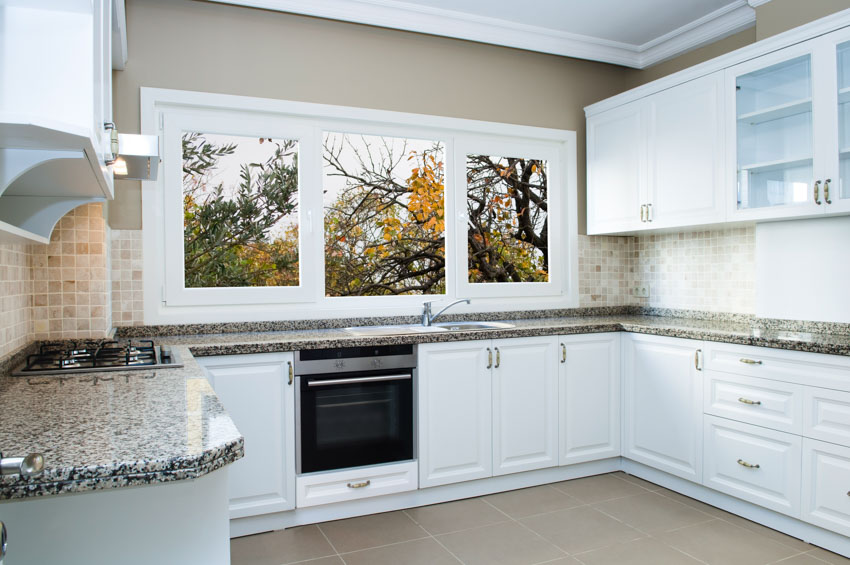
With unglazed porcelain mosaic tile, cutting the tiles may take a bit more effort since the materials are denser and thicker to work with. It will also take a bit of a creative touch to build a masterpiece.
If you’re going to use unglazed porcelain tiles, though, you may be limited in your options when it comes to style since many of them are centered on a rustic and traditional look. See pictures of mosaic tiles for shower floors and walls here.
Since unglazed porcelain tiles can absorb water, you might think twice about using them in the kitchen and bathroom. Sealing them is also absolutely important, which may be a bit tricky with mosaic tiles, but it’s still worth the try.
Porcelain Penny Tiles Without Coating
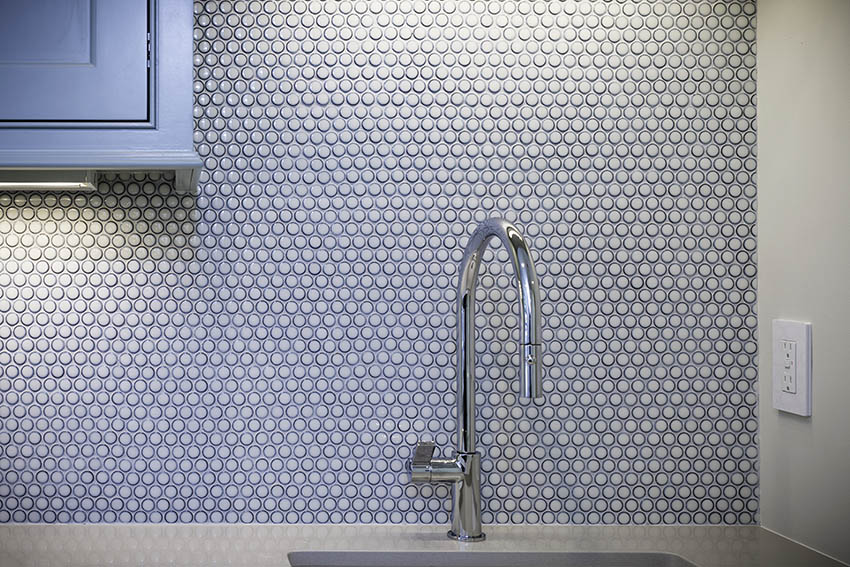
Like the difficulties you may encounter with mosaic tiling, the unglazed porcelain penny tile will need thorough and meticulous sealing just to be sure that the tiles are well-protected (Especially if you’re installing these flooring materials in the kitchen or bathroom).
Cutting them and shaping them into “pennies” usually is not necessary as they often come in large 1ft by 1ft tiles. Aesthetically, though, these unglazed porcelain penny tiles can add visual impact to your home wherever you plan to install them.
Penny tiles are versatile because of their size, and they can even be available in metal, glass, and ceramics. If you choose unglazed porcelain penny tiles, you can make your life easier by purchasing ready-made mesh backing with an established pattern that has been meticulously sealed.
Unglazed Subway Tile

The high-gloss coating is the distinguishable characteristic of these tiles since they were used to brighten dark subway stations. While unglazed varieties more commonly come in matte, they can also come with a gloss finish despite not having that “glaze”.
Unglazed subway porcelain tiling looks classic and traditional, adding visual interest to the room they are installed in. The uniform look offers a clean yet trendy aesthetic that can be flexible to other styles you can use for certain types of room in a house.
Pros and Cons of Uncoated Porcelain Type Tiles

But if you’re considering using these flooring for residential use, you will need to consider the advantages and disadvantages of using them at home.
Pros of Porcelain That Is Unglazed
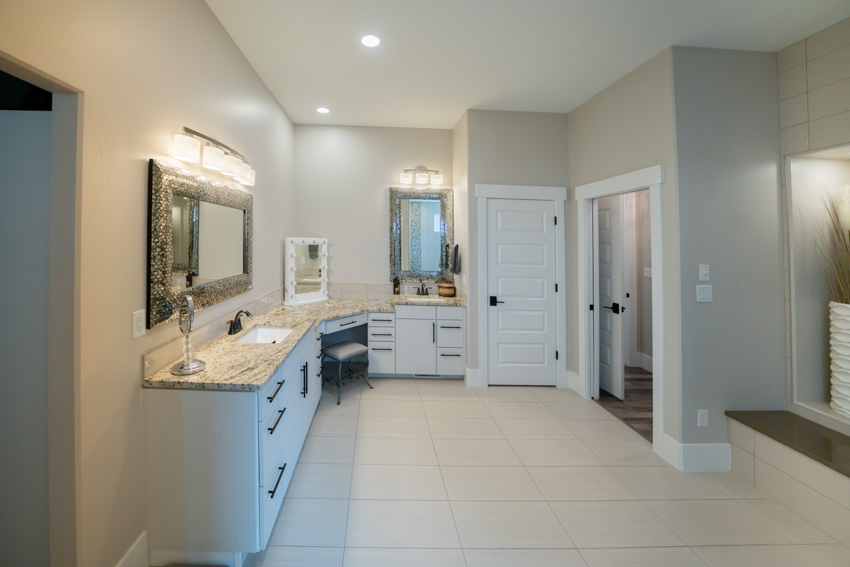
• Natural-looking Aesthetics: They have this more natural surface since they are free from enamel or liquid glass, which also makes them ideal for rustic-style and laid-back homes.
The earthy and rustic look comes from the aesthetics and colors developed from the mineral deposits in the clay. And they can go well with all other styles, decor, and embellishments.
• Thick, Dense, and Scratch-resistant: These unglazed varieties are thicker and denser and so would be more durable too. This is why these porcelain tiles are among the better types of flooring materials, particularly for areas with high foot traffic. With their durability, these tiles are hard enough that the scratches won’t penetrate the surface.
• Slip-resistant: They are known for being naturally slip-resistant since they go without enamel or liquid glass as their coating. Because of this characteristic, such tiling makes a perfect material for outdoor areas and commonly slippery spaces.
• Easy to Preserve & Maintain: While generally difficult to maintain, the unglazed tiling material is easier to handle and preserve. You only need white vinegar for grease and stain cleaning and combine it with a gallon of water.
Cons of Unglazed Tiles
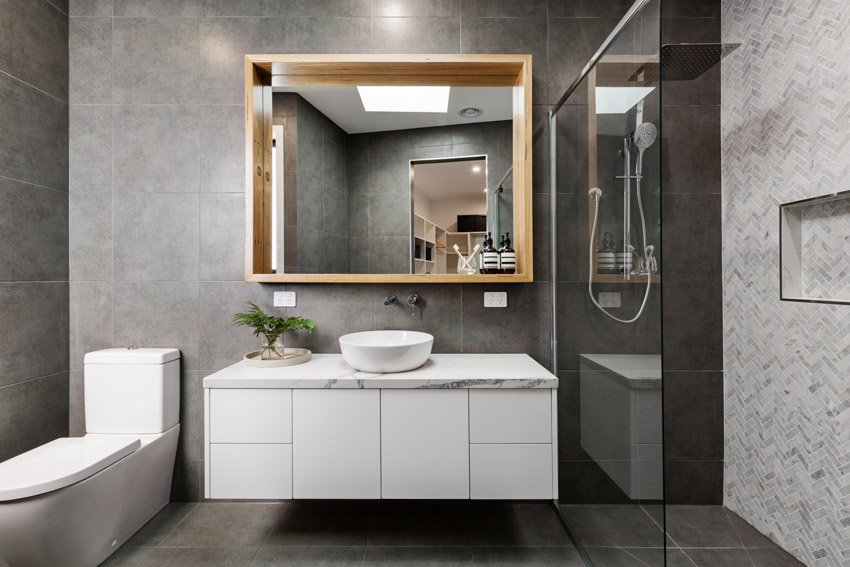
• Prone to Moisture Absorption and Staining: Since these tiles remain porous, they can absorb moisture and stains, sealing the material to protect the material from moisture damage and stains.
• Heavy and Dense: Porcelains are thicker and denser than ceramics, and unglazed ones are even thicker than the glazed variety. This means that such tiling is dense and heavy, making them a bit difficult to work with.
• Difficult Installation: Since unglazed these tiling pieces are dense and heavy, it will be difficult to install them. Cutting them will take much more effort, and laying them out properly will also need more strength. In fact, you might need the assistance of an expert to install them properly.
• More Expensive: In general, working with porcelains will require you to have enough budget. And while their costs are not outrageous, they also don’t come cheap, especially with unglazed porcelains. You might even be charged for the installation if you don’t know how to work with the material.
Glazed Vs Unglazed Tile
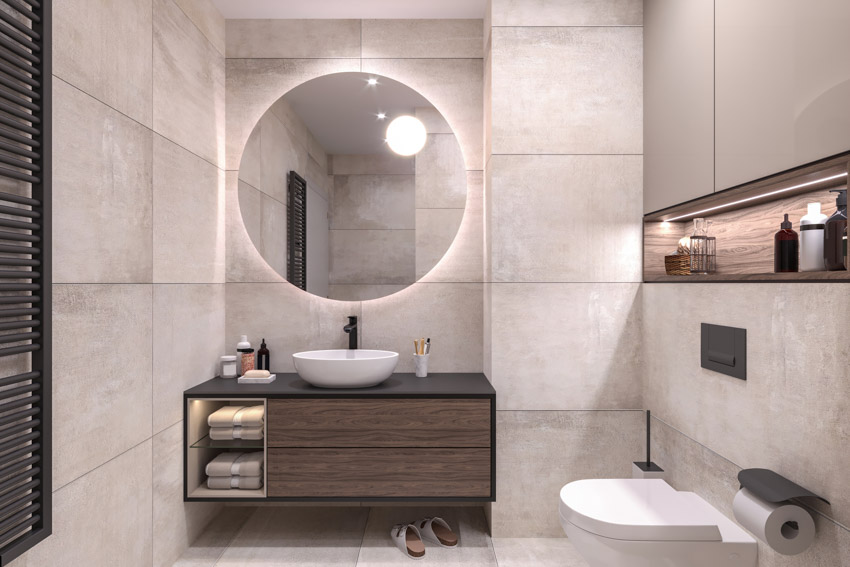
To give you just that, here is a sneak peek of the difference between glazed porcelain and unglazed porcelain tiles.
| Factors to Consider | Glazed Porcelain Tiles | Unglazed Porcelain Tiles |
| Manufacturing Process | With an additional firing process layered with a liquid glass coat | Without the additional step of coat |
| Ideal Application | Indoors (Mainly residential) | Outdoor areas (Commercial) |
| Surface Texture | Tends to be slippery | Naturally slip-resistant |
| Resistance to Stains & Scratches | Stain-resistant but with scratches tend to be visible | Scratch-resistant but prone to stains |
| Thickness | Thinner and less dense | Denser and thicker |
| Variety of Options | Large variety of selection | Limited availability of style |
| Availability | Never full-body porcelain tiles | Always full-body porcelain tiles |
Manufacturing Process: One of the major differences between glazed and unglazed tiling is a single step in the manufacturing process. At the same time, they are both compressed and tightly fired at an extremely high temperature; unglazed tiling skips one important process.
This involves the application of liquid glass or enamel on the surface of the flooring before firing them up. They become “unglazed” because of the lack of this protective coating of enamel and liquid glass (usually 5 to 7 microns thick).
Physical Components: These are considerably denser and thicker than glazed tile flooring. Because of their thickness, these non-glazed tiling can be a bit difficult to work with, from cutting shapes to laying them out.
With this, you can handle glazed tile porcelains better, and you might want the help of an expert if you’re dealing with unpolished ones.
Durability: This factor is one of the priorities that many homeowners consider to be top of their lists. You need to be able to balance aesthetics with durability for a well-rounded performance and advantage.
Since these are thicker and denser, they are logically more durable. Naturally, they are resistant to scratching and slipping.
An important thing to remember about this material is that it needs to be sealed and then re-sealed after some time. Unlike glazed tile floors that remain non-absorbent for life, unpolished tiling needs to be treated to deal with their porosity.
Maintenance: When it comes to maintenance, glazed tiling has it easier since you won’t need to seal and re-seal them to protect them against stains and water damage, unlike the unpolished ones.
Glazed tiling also rarely gets stained, and unless you seal your non-glazed tile flooring, it will take much more effort to clean this kind of tile than their glazed counterparts.
Ideal Application: This material is thicker and denser and has a better handle on daily wear and tear and high foot traffic.
In addition to that, they are also naturally slip-resistant. This is why they are perfect for the following:
• Commercial areas (Hotel lobbies, retail stores, and cafe flooring)
• Public spaces (Train stations)
• Outdoor spaces (Parks)
• Outdoor wet areas (Spaces surrounding the pools)
Glazed porcelains, on the other hand, are thinner but have more protection from stains and moisture. This makes them the best option for indoor spaces and those areas daily exposed to moisture in your home, including the following:
• Washrooms
• Laundry Rooms
• Kitchen floors
Types and Options: Glazed porcelains are available in a wide selection of designs and patterns, especially since they can be printed by inkjet machines. Non-glazed ones, on the other hand, are more natural and only available in their earthy and authentic look.
How to Seal Porcelain Without Any Coating
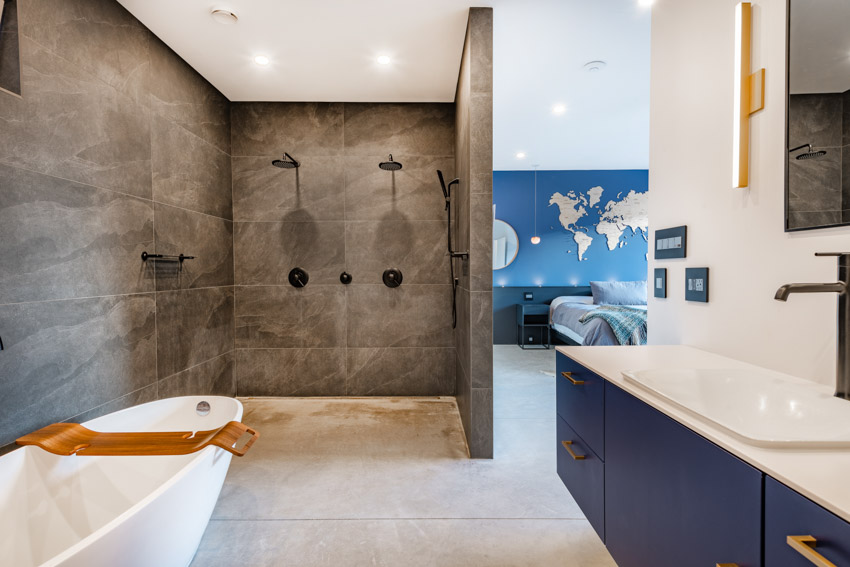
When you seal your tile flooring, you can use them even in spaces that are often exposed to moisture, including the kitchens, bathrooms, and shower areas.
If you’re sealing the non-coated tiling yourself, you need to know how to do it in the first place. It needs to be sealed using a liquid tile sealant of your choice, and you should accomplish this task during the installation process.
In your sealant choice, make sure to consider whether you want to keep their flat look or you want other textures, which you can choose through the sealant (Gloss and non-gloss options).
To help you seal your tiling, here are the simple steps to follow:
• Step 1 – Layout the tile flooring on the surface: Use a tile adhesive to lay the tiling down and make sure that they are spread down (either ⅛ or ¼ inch from each other) using a notched trowel. Use your tile cutter to cut the tiling edges and let them set overnight.
• Step 2 – Apply the sealant: Get your paintbrush dip an inch or two into the sealer, and slowly and meticulously brush the surface. Make sure to keep the strokes short and in one direction. Avoid the spaces between the tile flooring.
• Step 3 – Let the sealant dry: After the first coat, let the sealant dry for an hour or two before applying the second coat. After the second coat, let the sealant dry overnight.
• Step 4 – Grout the flooring: Use a flat rubber trowel or a grout float and press the grout into the lines. Allow it to sit for 10 minutes before wiping the lines with a damp sponge to remove excess grout.
• Step 5 – Allow the grout to cure: Wait for a week for the grout to completely cure before re-coating with the sealant. Follow step 4 again and completely let it cure for another week.
How to Clean Porcelain Without a Coating of Glaze

Here are the simple steps to follow.
• Step 1: Gather everything you need – Make sure you have the following items:
- Stiff broom
- Bucket
- Clean cloth
- Scrub brush
- 1 cup white vinegar
- 1 tsp. Dishwashing liquid
- Water
• Step 2: Clean the the tiling with a stiff broom – Use your stiff broom to sweep on the tile surfaces to make sure that you create enough friction to remove all dirt that got collected.
• Step 3: Create your homemade cleaning solution – Combine 1 cup of white vinegar and a gallon of warm water in a bucket. Mix the 1 tsp of dishwashing liquid in the vinegar-water solution (Do not add the dishwashing liquid while the water is running to avoid creating too many suds).
• Step 4: Wipe over your tiling – Dip a clean cloth in your cleaning solution and make sure to wring out all the excess liquid before wiping the tile surface and removing all the grime. Re-wet your cleansing cloth frequently.
• Step 5: Dry your tiles – Get a clean and dry cloth to wipe the surface dry.
Can You Use Unglazed Type Tile in the Shower
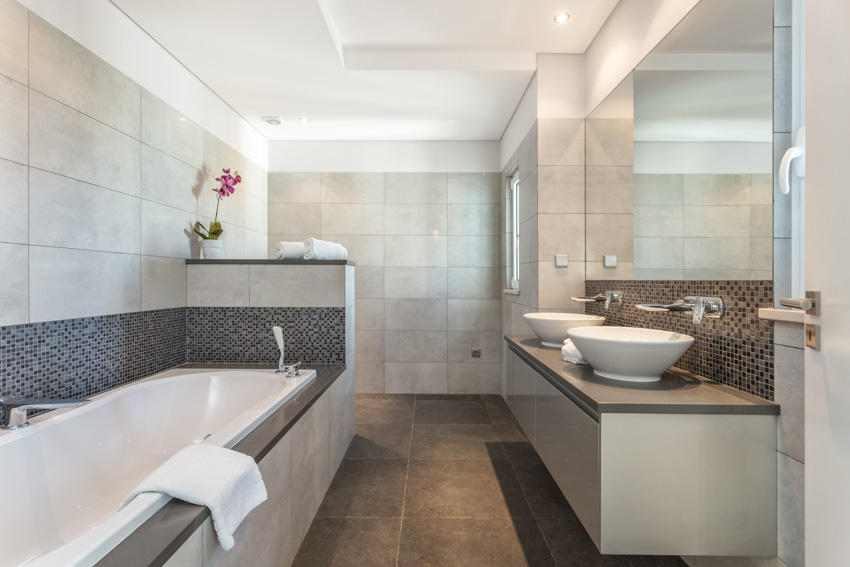
Fully vitrified tiling is actually ideal for spaces exposed to moisture, like the shower area, because of its naturally slip-resistant surface. You won’t have any issue with the possibility of slipping on the floor when wet. Daily wear and tear won’t also be an issue since these are particularly dense, thick, and durable.
If you’re worried about the porosity of the material and the possible water damage and stains from too much exposure to moisture, that won’t be a problem if you seal them.
While they remain porous and tend to absorb liquid, unlike their glazed counterparts, they can be protected from water damage and stains. You just have to make sure that all them are appropriately sealed, and when the time comes, re-seal them for their continuous protection.
See more related content in our article about granite flooring on this page.

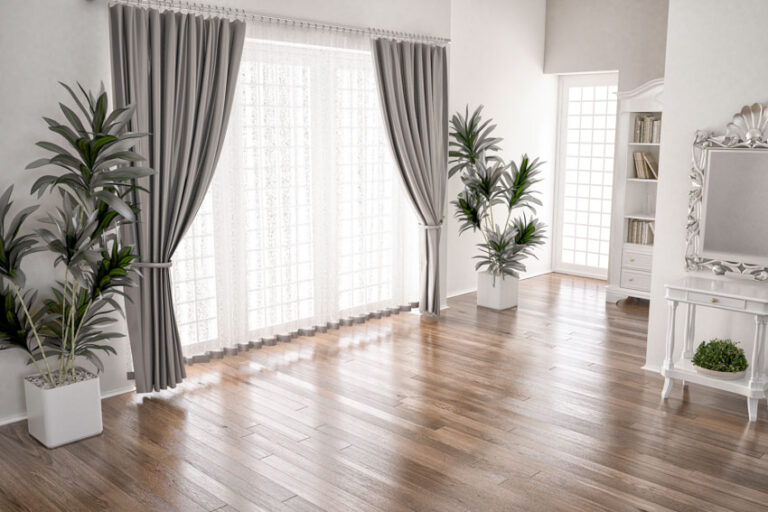
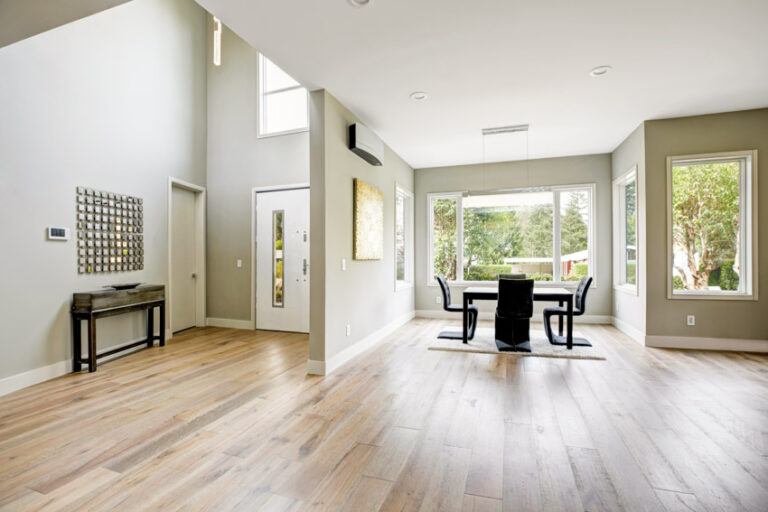

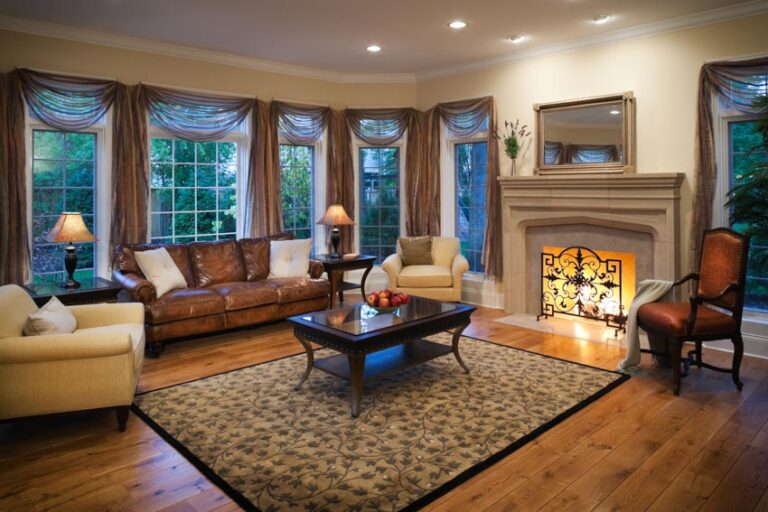

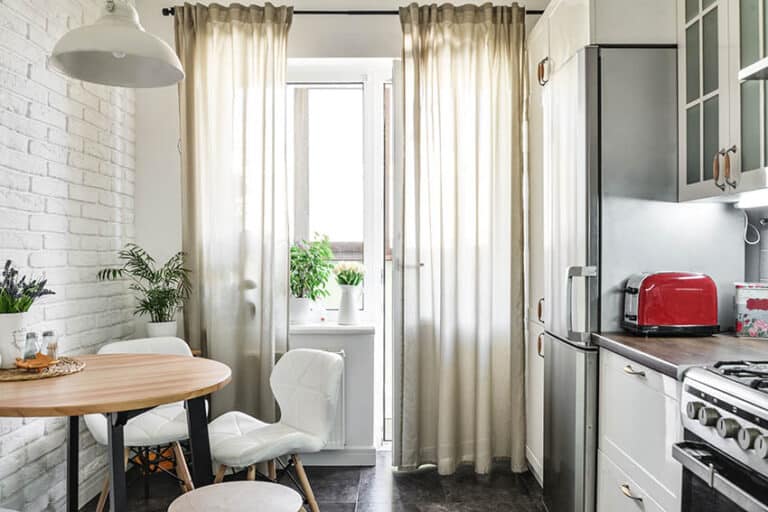
I got a free load of unglazed tiles from a friend who changed her mind on a remodel and am thinking about putting them in in my bathroom. This will be to replace very old vinyl tile that is coming up. Do you think its necessary to seal unglazed porcelain tile in the bathroom area?
I would check to see if there is any information on the box or talk to your friend to see if she has the type of tile so you can get more information. Often you can find precautions listed on the product box for sealing and care. You may also want to do a water test by putting a small droplet of water on the tile and letting it sit for 10 minutes. Then wipe off the water and check to see if a water ring is left behind. If you see a dark circle it most likely means your tile should be sealed to prevent it from soaking up water.